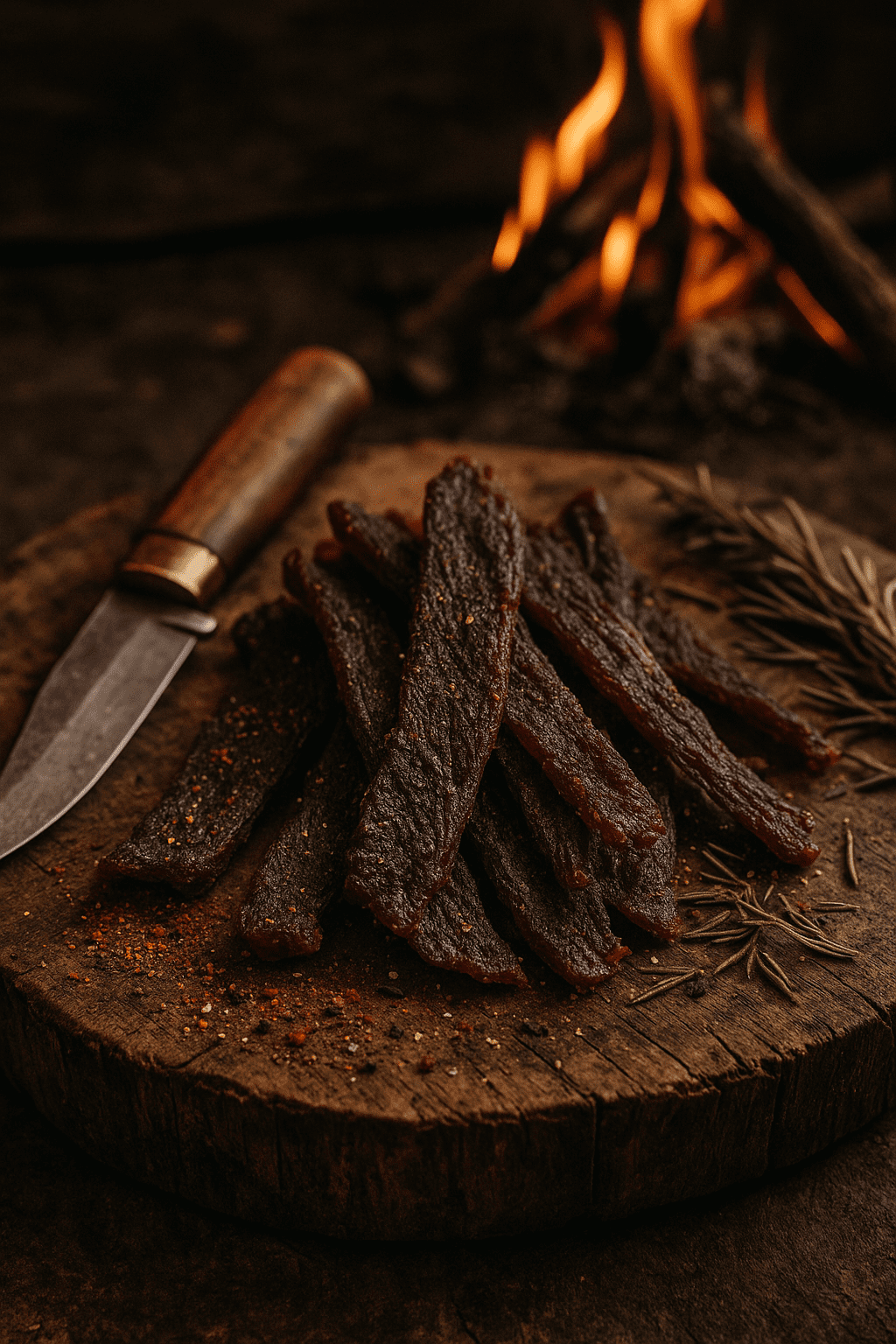
The Ultimate Guide to Making Moose & Fish Jerky: History, Methods, Tools, and Flavors
If you love the outdoors, there’s a good chance you’ve either tasted—or at least heard of—the magic that is homemade jerky. Whether you’re working with a fresh moose harvest or a stringer of northern pike, making jerky is one of the oldest and most rewarding ways to preserve wild game and fish. Before we dive into recipes, let’s explore the fascinating world of jerky: where it came from, how to make it, the tools you’ll need, and some flavor inspiration to get your creative juices flowing.
A Brief History of Jerky
Jerky isn’t just a tasty snack; it’s a tradition that dates back thousands of years. The word “jerky” comes from the Quechua word “ch’arki,” meaning “dried, salted meat.” Indigenous peoples across the Americas perfected the art of drying and curing meat as a way to preserve food for long journeys and harsh winters. Early North American trappers and explorers relied on jerky for its portability and nutritional punch.
Fish and game jerky have long been staples in northern climates, where hunting and fishing are woven into the fabric of daily life. Today, jerky remains a favorite among outdoor enthusiasts, campers, and anyone looking for a protein-rich, shelf-stable snack.
Why Make Moose or Fish Jerky?
- Preservation: Jerky is a fantastic way to extend the shelf life of your harvest, especially if freezer space is limited.
- Portability: It’s lightweight, non-perishable, and perfect for fishing trips, hiking, or road snacks.
- Customization: Control the flavors, salt, and ingredients—especially important for those with dietary restrictions.
- Tradition: Making jerky connects us to centuries of outdoor heritage and self-reliance.
The Basics: How to Make Jerky
At its core, jerky is simply lean meat or fish that’s been sliced, seasoned, and dried. The process removes moisture, making it inhospitable to bacteria. Here’s a step-by-step overview:
1. Choose Your Protein
- Moose: Lean, flavorful, and perfect for jerky. Trim off all fat and silver skin—these parts don’t dry well and can spoil.
- Fish: Northern pike, walleye, trout, and salmon are all great choices. Remove skin and bones for best results.
2. Slice It Thin
- Slice meat or fish into thin strips (about 1/4 inch thick). For moose, slice against the grain for a tender bite. For fish, thicker strips can work if you prefer a chewier texture.
3. Marinate or Season
- Marinate strips in your favorite blend of spices, salt, and curing agents. This is where you can get creative (more on flavors below).
4. Dry It Out
- Use a dehydrator, oven, smoker, or even air-drying (in dry, bug-free climates). The goal is to remove moisture without cooking the meat.
5. Store & Enjoy
- Once fully dried, store jerky in airtight containers or vacuum-sealed bags. Properly dried jerky can last for months.
Different Ways to Make Jerky
1. Dehydrator
- The most foolproof method. Set the temperature (usually 155°F for meat, 145°F for fish), lay out your strips, and let it run for several hours.
2. Oven
- Place strips on wire racks over baking sheets, set the oven to its lowest setting, and prop the door open slightly for airflow. It takes 4–8 hours, depending on thickness.
3. Smoker
- Adds amazing flavor. Use low heat and plenty of smoke. Great for both moose and fish, but watch closely to avoid over-drying.
4. Traditional Air Drying
- Best in dry, cool climates with low humidity and no insects. Hang strips in a well-ventilated area. This is the most “old school” method and works well for fish.
Tools You’ll Need
- Sharp knife: For slicing meat or fish thinly and evenly.
- Cutting board: Preferably non-porous for easy cleaning.
- Mixing bowls: For marinating.
- Dehydrator or smoker: Optional but makes the process easier.
- Wire racks or baking sheets: For oven drying.
- Vacuum sealer or airtight containers: For storage.
- Thermometer: To ensure safe drying temperatures.
Popular Flavors & Marinades
Jerky is a blank canvas for flavor. Here are some classics and creative twists:
- Classic Salt & Pepper: Simple, lets the meat or fish shine.
- Teriyaki: Soy sauce, ginger, garlic, and a touch of sweetness.
- Maple Pepper: Perfect for Canadian game—maple syrup, cracked pepper, and a hint of smoke.
- Spicy Cajun: Paprika, cayenne, garlic, and black pepper.
- Honey Garlic: Sweet and savory, great with moose or salmon.
- Dill & Lemon: Especially tasty with fish jerky.
Safety & Storage Tips
- Always use lean cuts and trim away fat.
- Marinate in the fridge, not on the counter.
- Dry to an internal temperature of at least 160°F for meat, 145°F for fish.
- Store in a cool, dry place; refrigerate for longer shelf life.
Fun Facts & Trivia
- Jerky was a staple for voyageurs and fur traders in Canada—often made from bison, elk, or fish.
- Fish jerky is a delicacy in many cultures, from Indigenous North American nations to Scandinavian and Asian cuisines.
- Modern jerky can be made from almost any protein, including wild game, poultry, and even plant-based alternatives.
- Adding a touch of smoke or maple syrup is a uniquely Canadian twist that sets local jerky apart.
- Jerky is packed with protein and, when made at home, contains no preservatives or artificial flavors—just pure, wholesome fuel for your next adventure.
Stay tuned for our favorite moose and fish jerky recipes, coming up next! If you have a favorite flavor or secret tip, share it in the comments—let’s keep this tradition alive, one batch at a time.
